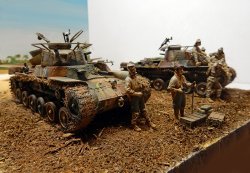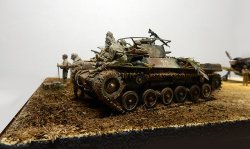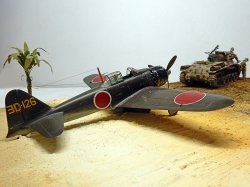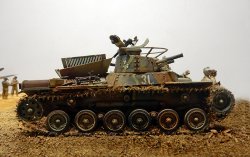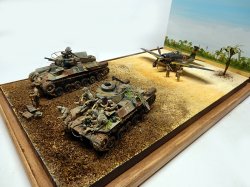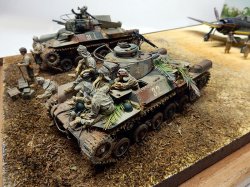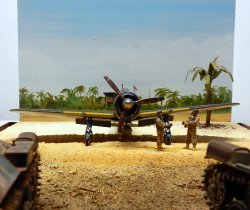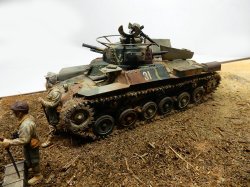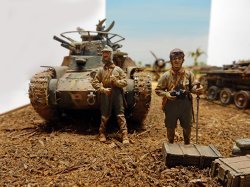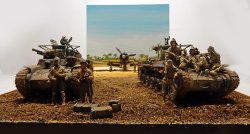
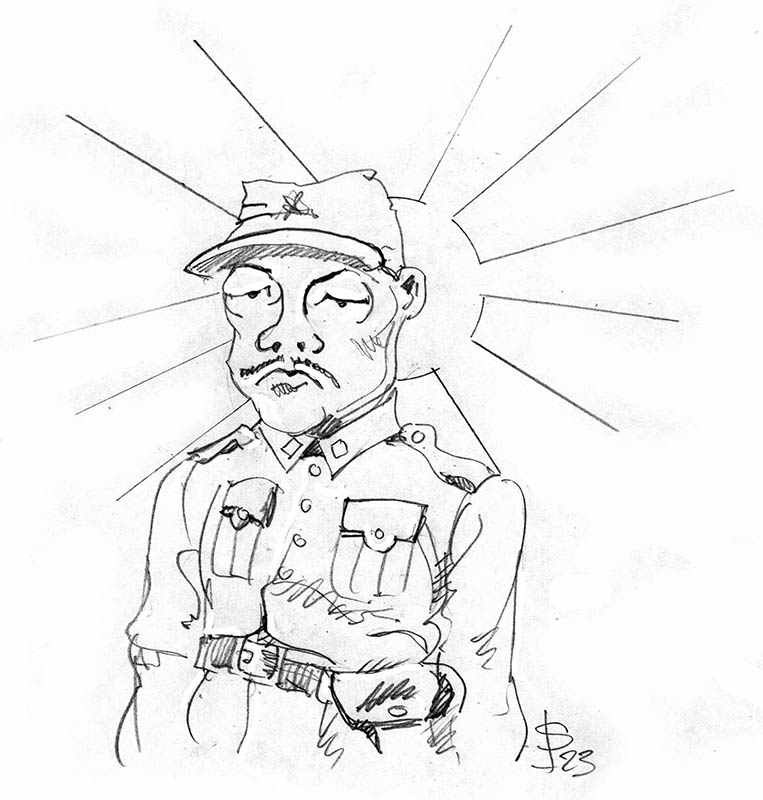
Le Chi-Ha constituait, avec le Ha-Go, le gros des forces blindées terrestres japonaises.
Ce sont les chars japonais les plus souvent rencontrés par les Alliés pendant toute la durée du conflit. Ils ont été largement déployés en Chine après la seconde invasion de 1937.
Au cours de la campagne du Pacifique, de nombreux Type 97 furent postés sur des îles stratégiques et se retrouvèrent engagés dans des actions défensives désespérées. Leur intervention la plus notable eut lieu lors de l'offensive combinée du 9e régiment de chars du colonel Takashi Goto et du 136e régiment d'infanterie du colonel Yukimatsu Ogawa, réunissant près de soixante chars Chi-Ha et Ha-Go, ainsi que de nombreuses tankettes, à Saipan, contre le 6e régiment de marines américain. Ils sont brisés par un feu d'enfer provenant de la terre , mer et de l'air. Il s'agit de la dernière et de la plus importante offensive japonaise impliquant de tels blindés durant le conflit. Sur de nombreuses autres îles, les chars Chi-Ha furent simplement enfouis à moitié dans le sol, en tant que positions défensives, car leur blindage s'avérait largement inférieur au M4 Sherman et à la plupart des chars alliés envoyés dans ce secteur. L'infériorité numérique s'est avérée être un problème trop fréquent. A Peleliu, Iwo Jima et Okinawa, les quelques Type 97 restants étaient jusqu'à dix fois plus nombreux qu'eux, et un seul bataillon d'infanterie comptait plusieurs opérateurs de bazooka, tous mortels face aux Chi-Ha.
Spécifications :
Dimensions 5,5 x 2,34 x 2,33 m (18 x 7,6 x 7,5 ft)
Poids total, prêt au combat 15 tonnes/16,5 tonnes pour le Kai
Équipage 4
Propulsion Mitsubishi Type 97 diesel, V12, 170 hp (127 kW)@2000 rpm
Vitesse 38 km/h (24 mph)
Blindage 12 mm (0.15 in) toit et fond, 25 mm (0.47 in) glacis et côtés
Armement 47 mm (1.85 in)
3 x mitrailleuses de type 92 de 7,7 mm (0,3 in)
Portée (route) 210 km (165 miles)
Production totale 1162 + 930 Kai
Together with the Ha-Go, the Chi-Ha made up the bulk of Japan's armored land forces.
They were the Japanese tanks most frequently encountered by the Allies throughout the conflict. They were widely deployed in China after the second invasion of 1937.
During the Pacific campaign, many Type 97s were stationed on strategic islands and engaged in desperate defensive actions. Their most notable intervention took place during the combined offensive of Colonel Takashi Goto's 9th Tank Regiment and Colonel Yukimatsu Ogawa's 136th Infantry Regiment, bringing together nearly sixty Chi-Ha and Ha-Go tanks, as well as numerous tankettes, at Saipan, against the American 6th Marine Regiment. They were smashed by a hellish fire from land, sea and air. This was the last and most important Japanese offensive involving such tanks during the conflict. On many other islands, Chi-Ha tanks were simply buried halfway into the ground as defensive positions, as their armour proved far inferior to the M4 Sherman and most of the Allied tanks sent into the area. Numerical inferiority proved an all-too-frequent problem. At Peleliu, Iwo Jima and Okinawa, the few remaining Type 97s outnumbered them by up to ten to one, and a single infantry battalion had several bazooka operators, all deadly against the Chi-Ha.
Specifications:
Dimensions 5.5 x 2.34 x 2.33 m (18 x 7.6 x 7.5 ft)
Total weight, combat-ready 15 tonnes/16.5 tonnes for the Kai
Crew 4
Propulsion Mitsubishi Type 97 diesel, V12, 170 hp (127 kW)@2000 rpm
Speed 38 km/h (24 mph)
Armor 12 mm (0.15 in) roof and bottom, 25 mm (0.47 in) glacis and sides
Armament 47 mm (1.85 in)
3 x 7.7 mm (0.3 in) type 92 machine guns
Range (road) 210 km (165 miles)
Total production 1162 + 930 Kai















